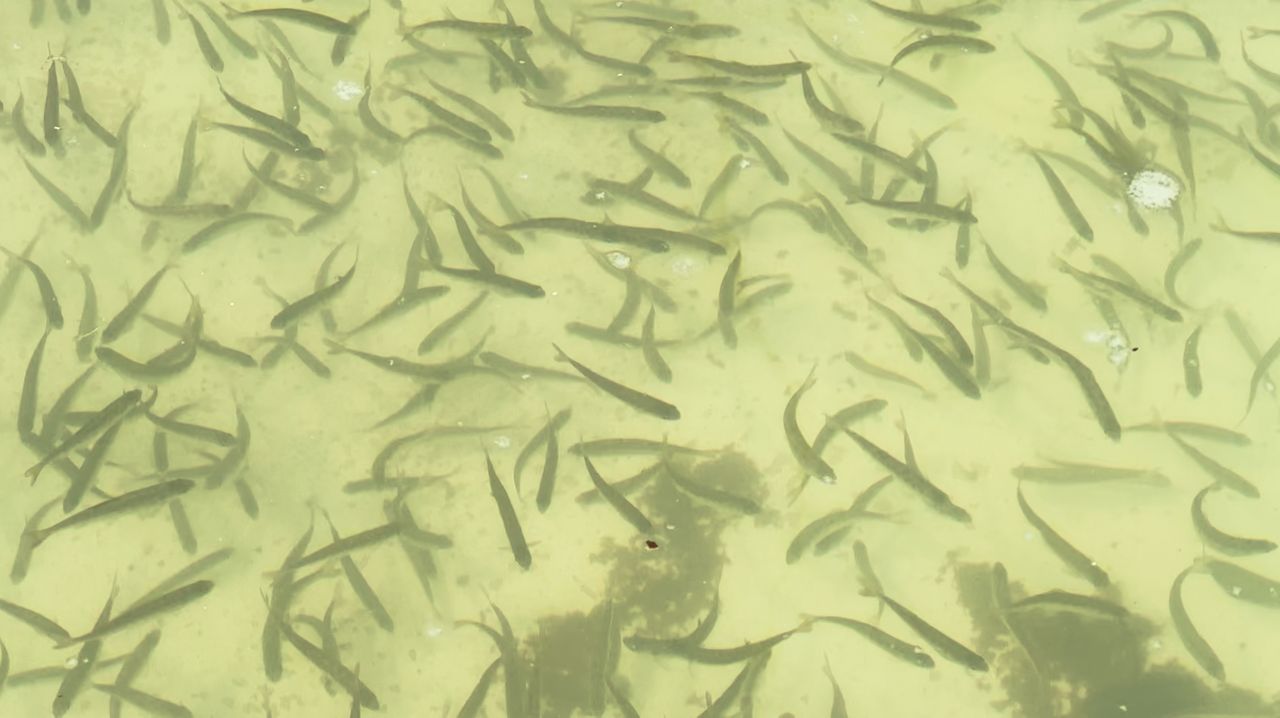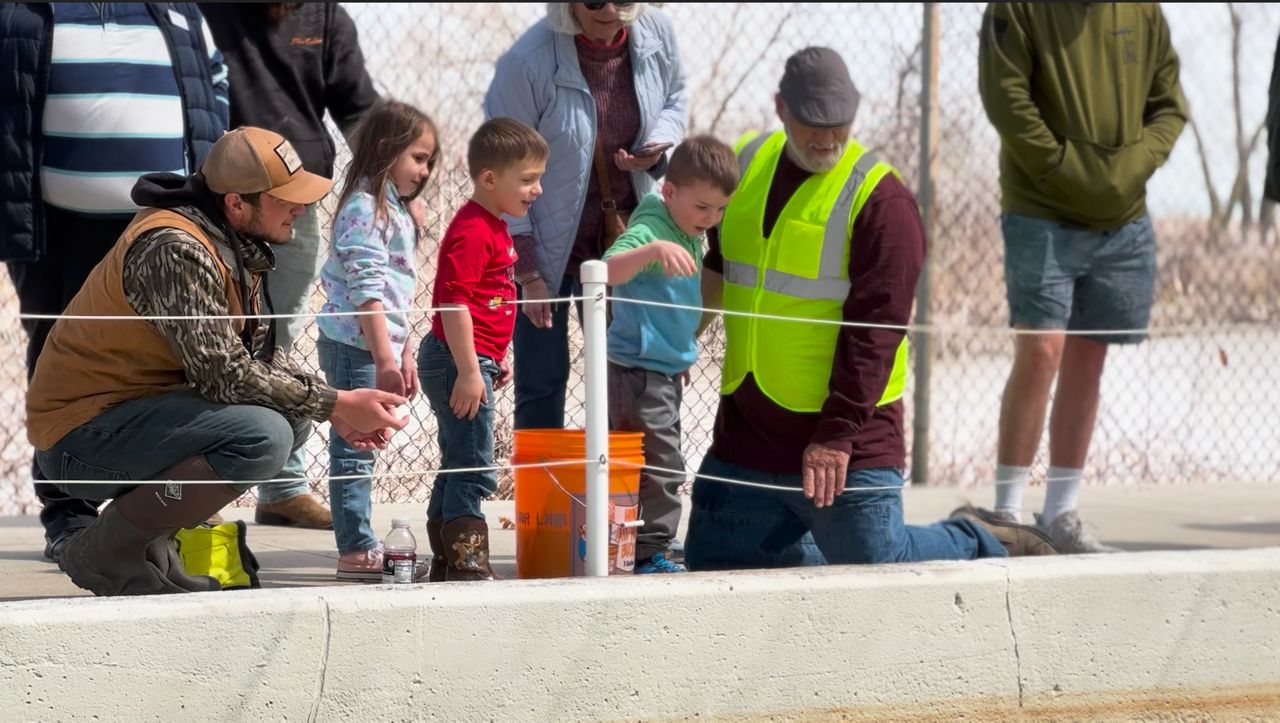KENOSHA, Wis. — The Kenosha Sportfishing and Conservation Association has received 40,000 chinook salmon from the Wisconsin Department of Natural Resources to eventually be released into Lake Michigan.
Before the chinook salmon arrived, the association made several changes to its salmon rearing pond in hopes of having more fish survive while in their care.
Walter Kreuser, the president of Kenosha Sportfishing and Conservation, said they now have oxygen lines connected to each one of their four ponds.
They are also controlling the flow of the well-water they pump into each of the ponds instead of having it flow freely between all of them. The goal is to keep temperatures low for the chinooks.

“We are trying to do two things with it,” said Kreuser. “The largest thing is to cut our electricity cost and by doing this, we are trying to naturally aerate the water instead of having to run a third big air pump to pump oxygen.”
After weeks of preparation, the DNR brought the chinooks to the Kenosha Sportfishing and Conservation Association, which will take care of them until May.
Aaron Schiller, a DNR fisheries biologist, said every year they raise millions of chinooks and other types of fish so they can be released into Lake Michigan from Kenosha to Gills Rock.
“By doing programs like this, we hope to imprint better and return at a higher rate to that location so we stock all of the harbors going up the coast and we try to spread out that stocking so that everybody has fishing opportunities closer to home,” said Schiller.

Kreuser said this group of fish is expected to return to the Kenosha area in three years to spawn.
“In the meantime, they are eating machines,” said Kreuser. “They are eating all of the alewives that are a nuisance fish. They are also eating the gobies at the bottom, which is an invasive species, so these fish here are cleaning up the water for us and a byproduct of that is great fish and great eating.”
While the chinooks are here, Kreuser said it’s an opportunity to teach the public why these fish are so vital for Wisconsin.
To learn more about the Kenosha Sportfishing and Conservation Association, click here.



